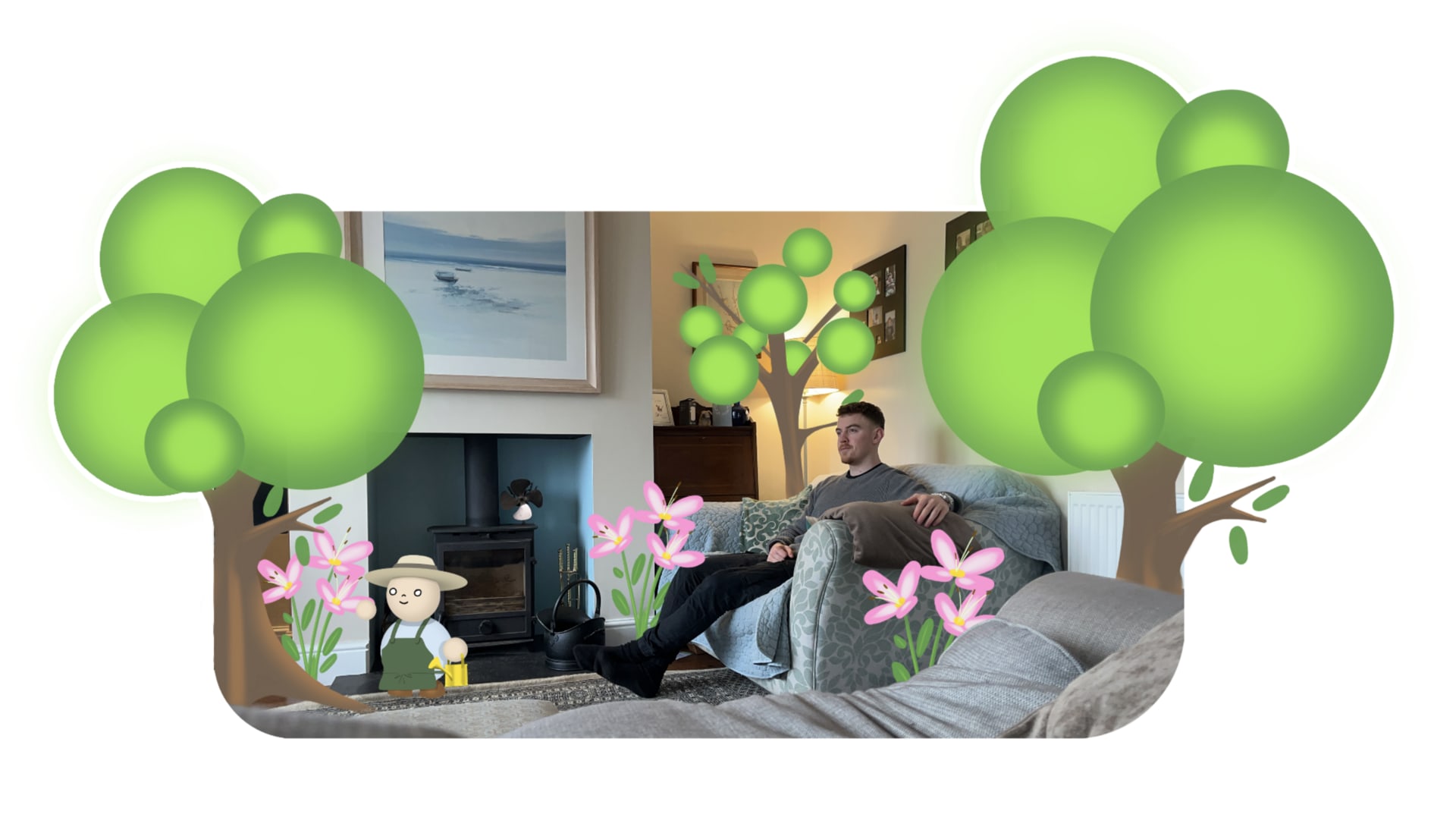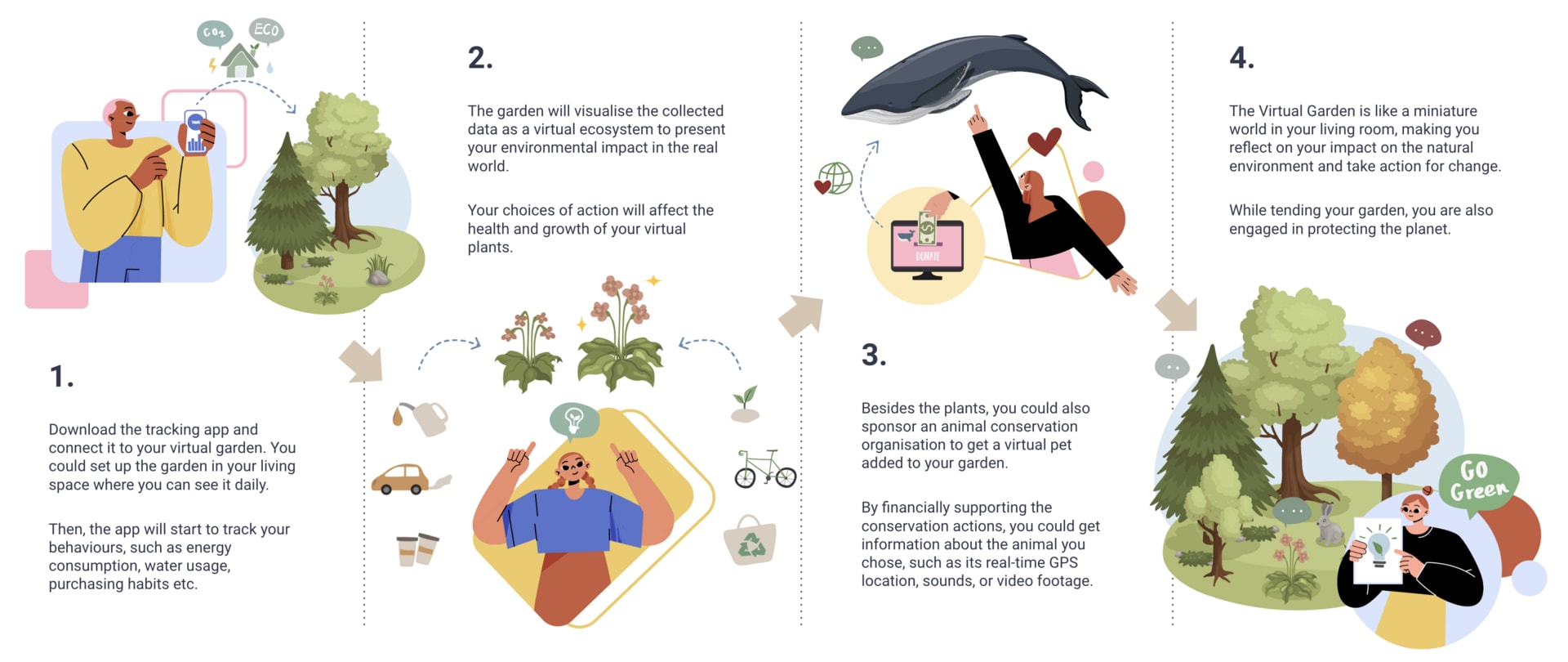In 2040, the borderlines between digital and physical worlds would be invisible. Virtual environments will become part of our daily lives and perception. We envision, a product that uses this technology to connect individuals to the planet by data visualisation of personal carbon footprint, monitored species and ecosystems.
As a virtual miniature of the natural environment, the virtual garden is tethered to the actual data collected from the personal behaviours such as energy consumption, water usage, purchasing habits etc. The health of your personal garden will be determined by positive actions to the real environment. We hope that our idea could encourage better choices and give people a tangible connection to their impacts on the natural world through positive rewards.








